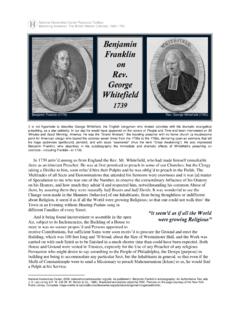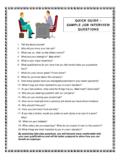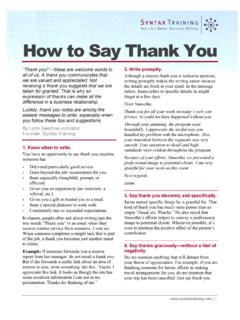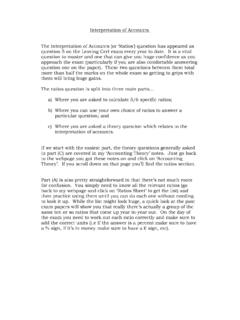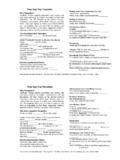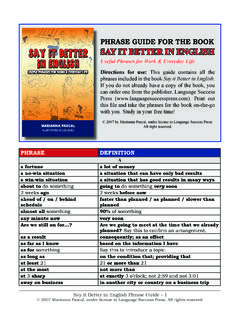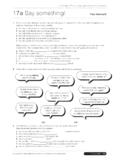Transcription of HOW TO SAY IT IN CREE 11 - Keewatinwebs.ca
1 how to say it in cree (Revised and Expanded) reserved by: Solomon Ratt 1990, 1995 HTML Authors: Laliberte/Waddell INTRODUCTION: The following program is primarily an aid to the acquisition of simple, everyday phrases in Cree. It is hoped that students of Introductory Cree classes, and those who browse or travel in Cree country, find this a useful tool in their studies. To use correctly, simply fill in the blanks. The last section includes a glossary of most of the words contained in this program plus more common words which do not appear. Table of Contents I. Pronunciation 1.
2 Consonants 2. Vowels II. Polite Conservation III. Asking for Someone: Animate Nouns IV. Asking for Something: Inanimate Nouns V. Asking Directions: In General VI. Other Questions 1) Simple Requests: I 2) Simple Requests: You 3) Simple Requests: Want VII. Modals VIII. Some Common Words IX. Some Useful Words X. Time XI. Numbers XII. Time Phrases XIII. Days of Week XIV. Dates XV. Months XVI. Seasons XVII.
3 Likes and Dislikes XVIII. Verbs AI Verb Roots I I Verbs Colors Tenses Transitive Verbs XIX. Verb Charts XX. Glossary I. PRONUNCIATION 1. Consonants: Ten consonants are used to write Cree in the Roman Orthography. They are: c, h, k, m, n, p, s, t, w, y All but four are pronounced similar to their English counterparts. The four that will give problems are: c, k, p, and t. Examples: A.
4 C - is like the "ch" in chalk i) c skwa - wait ii) cimo - tell a story (AIV) iii) m kw c - presently B.) K - is unaspirated* as the "k" in skin i) kiy m - It doesn't matter ii) okot - his/her nose (I) iii) kisk sik - your eye (I) C.) P - is unaspirated as the "p" in spit i) p yisk - eventually ii) apoy - a paddle (A) iii) akohp - a blandket (A) D.
5 T - is unaspirated as the "t" in Stan i) tim w - It is deep (IIV) ii) mistik - a log (I) / a tree (A) iii) tiht - some * unasperated means making a consonant sound without a slight puff of air as in pronouncing the "k" in "kin", the "p" in "pit" or the "t" in "tan" (AIV) refers to Animate Intransitive Verb (pp. 22,23) (IIV) refers to Intransitive Inanimate Verb (p. 23) (I) refers to Inanimate noun (pp. 3,6) (A) refers to Animate noun (pp.
6 3,5) Note: In D(i) above, the whole word is printed but in speaking one tends to drop the first "I". So rather than "t nisi" we have in normal speech "t n'si". Since this program is designed for speech all possible elisions will be marked by an "'". Another aspect of phonetics is the combination of two vowels to make one vowel sound. For example we have: 1. Nika-apin ta - I will sit here. 1 is written as the above but upon speaking we combine the short "a's" to make a long " " sound. So in speaking we have the same sentence: 2. Nik pin ta - I will sit here. All entries here will be written as to 2.
7 2. VOWELS Cree Roman Orthography uses four English vowels to make seven vowel sounds. There are four long vowels and three short vowel sounds. Short Vowels:These are the three short vowels used in the SRO. A.) a - pronounced as the "u" in but i) apis s - a little ii) capasis - lower iii) p na - feed the fire (AIV) B.) i - pronounced as the "i" in pit i) iskw w - a woman (A) ii) tipisk w - it is night (IIV) iii) api - sit (AIV) C.
8 O - pronounced as the "oo" in "book" i) omisi - this way (showing one how) ii) w pos - a rabbit (A) iii) m ciso - eat (AIV) Long Vowels: To make vowels long in written Cree, a bar (macron) or a circumflex ^ is added above the vowel. A.) a - pronounced as the "a" in father i) m w - a bee (A) ii) n p w - a man (A) iii) p tim - later B.) i - pronounced as the "e" in be i) y p w - a buck (deer or moose) (A) ii) m nis - a berry (I) iii) awik c - or else C.
9 O - pronounced as the "o" in ore or the "oo" in too i) ta - here ii) nit t m - my friend (A) iii) hp - or D.) e - pronounced as the "ay" in say i) kosi - there! ii) p yak - one iii) t pw - true, truly Note: The Cree divide nouns into two genders: Animate and inanimate. Using the right verbs, colors, demonstrative pronouns all depend on the noun's gender. Most living things are Animate in gender; most non-living things are Inanimate.
10 Glossary II. POLITE CONVERSATION A. T n'si Hi! How are you? B. Nam ya n n'taw, kiya m ka Fine, and you? A. P yakwan, The same, t pw miyo-k sikaw it is truly a nice day. B. ha, aw n wa Yes, who is this that k w c wat you are with? A. Iyaw, nit t m awa Oops, this is my friend. B. (to C) T n'si, Hi! T n's s yihk soyan how are you called?
